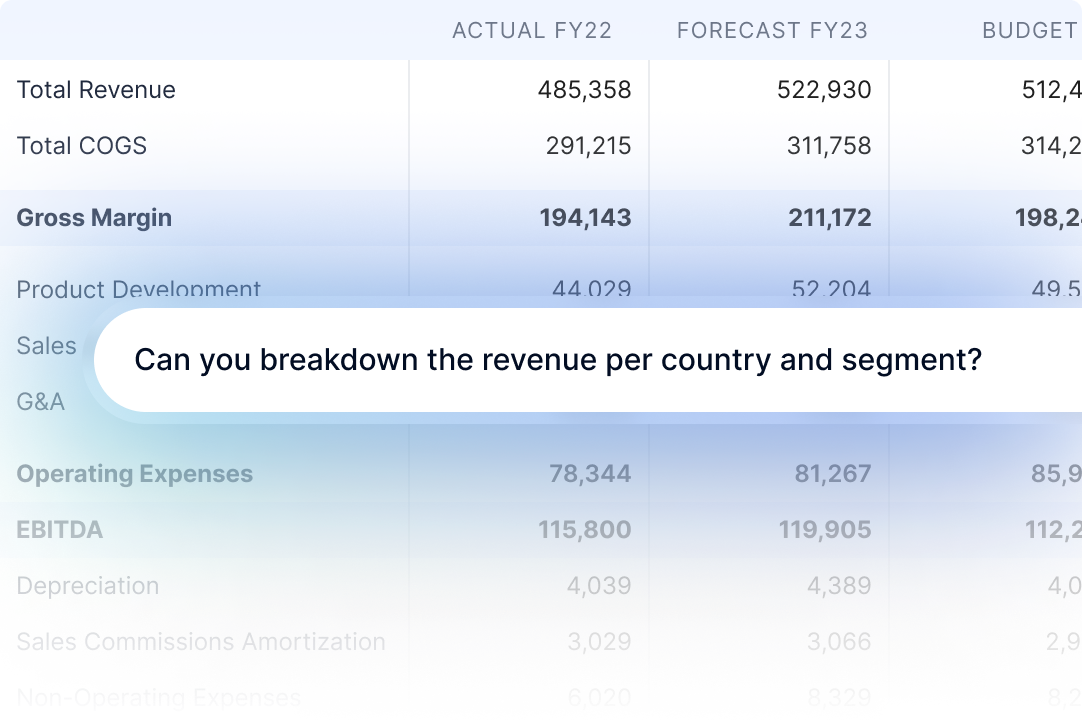xP&A in Action: Real-World Scenarios of Connected Planning
Author: Jurgen Maas
Extended Planning & Analysis (xP&A) isn’t just a theory. When done well, connected planning delivers measurable improvements in agility, cost control, alignment, and speed of decision-making. In this post, we’ll explore concrete scenarios in Finance, Operations, HR, and Sales where xP&A has driven real impact — and then walk you through a three-month roadmap to get started, show early wins, and build momentum.
What is xP&A — A Quick Refresher
Briefly, xP&A (extended planning & analysis) evolves traditional FP&A by connecting planning, forecasting, and analysis across the enterprise: Finance, HR, Sales, Supply Chain, Operations, Marketing, etc. It involves integrated data, driver-based models, scenario planning, unified dashboards, and more frequent/rolling forecasts.
Key benefits often cited include:
- Breaking down silos and improving collaboration across functions.
- Faster and more responsive forecasting and planning.
- Better data transparency, less manual effort, fewer errors.
- Ability to run “what-if” or “scenario” modeling: to test operational, HR, or market variations and see financial impacts.

Real-World Scenarios: xP&A in Action
Let’s describe several scenarios showing how different functions can benefit when planning is connected across the business.
The first scenario is a manufacturer who is facing volatile raw-material costs and supply chain disruptions. This affects the functions of finance, operations, and supply chain. By using the xP&A processes and solutions, integrating supply chain planning with also a financial forecast allows for a response to cost spikes, and improved cash-flow forecasting.
Also, by using a common data layer and building driver-based models that link lead times, inventory buffers, production schedules (with costs), cash-flow, and working capital, it allows quicker response to delays but also reduction in safety stock and better margin protection.

Another scenario is the sales promotions are not resulting in the right financial outcome due to incorrect discounts or demand surges. This affects the functions, sales and finance.
By using xP&A processes and solutions, scenario planning can used for simulate what happens if sales volumes increase (or drop), what discounting is needed, how that impacts margin and cash, how operations and supply chain know when to scale to meet the required demand and for finance the associated costs of scaling. This gives a faster and more reliable decision-making around sales promotions and the discounts. It will also increase the alignment between what sales are promising and what finance expect, and operations can deliver.

The last scenario is uncertain demand and how the production scheduling and capacity planning should adapt to the uncertainty. This affects the functions, operations and finance.
By using the xP&A processes and solutions, an Integrate demand forecast (from sales), production constraints (machines, labor, supply), and financial impact (cost, revenues, working capital) can be created. As a result, scenario planning can be used to answer questions like what if demand drops; what if certain suppliers are delayed; what if overtime needed vs subcontracting etc.

Three-Month Roadmap: From Zero to Momentum
Getting started with xP&A doesn’t have to mean a huge, multi-year transformation. With good planning, you can show measurable results in about three months. Here’s a suggested roadmap.
Month 1: Discovery & Pilot Design
- Map current planning process in the chosen domain (e.g. Sales, Finance, or HR Headcount); identify gaps, data silos, and pain points.
- Identify data sources: where the data is (CRM, ERP, HRIS, spreadsheets, etc.), assess data quality.
- Secure sponsorship from finance lead and functional leader (sales, HR, operations).
- Define pilot scope: small, focused, but high impact (e.g. Sales forecast and financial impact; HR hiring cost).
- Choose or set up a tool/platform or environment for pilot: dashboards, integration, scenario modelling.
Month 2: Build & Execute Pilot
- Build the driver-based model(s) for pilot: link operational or sales drivers to financial outputs.
- Integrate data streams (as much as possible) into a unified view or dashboard.
- Run baseline forecasts/scenarios and compare with past performance.
- Engage cross-functional participants: hold workshops with finance + the other function(s), get feedback, and refine.
- Automate as much as possible data collection and reporting.
Month 3: Measure, Refine & Plan Scale
- Compare pilot outcomes vs baseline: what improvements in speed, cost, accuracy, and alignment occurred.
- Identify what worked, what data/integration gaps remain, what change management or skills are required.
- Capture success stories/lessons learned; communicate to senior leadership and other functional leaders.
- Plan the next areas for extension (other functions or processes).
- Establish governance: who owns the planning model, data refreshes, roles & responsibilities.

Final Thoughts
xP&A is more than “joining Finance with another department.” It’s about building connected, dynamic planning processes that allow the organization to sense change and respond quickly, with fewer surprises. When Finance, HR, Sales, and Operations all plan together, decisions become more grounded, risk is reduced, and performance improves.
Let's Talk!


